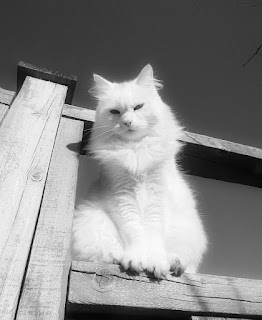

Countries in Europe, like Italy and France exchanged gifts on Twelfth Night. More or less representing the Three Kings. Presents all round for everyone.

By the time of Charles Dickens, around 1844, presents took a back seat, they weren't really as important as in years to come. Santa Claus and his 8 tiny reindeer got very busy as time wore on.

People would give humble things such as fruit, toys for children, hand made things, and maybe a book, or ribbons for hair. The original idea for Father Christmas came from the Bishop of Myra, from the 4th century.
Nicholas, the Bishop of Myra, was very kind and generous and would give gifts to those who needed it. He could stop dreadful storms on the shore by just reaching out his hand. He died on Dec 6 around 352 A.D. on which he is celebrated every year.
In 1823, the poem Twas the Night Before Christmas was written. In 1863 the first Santa Claus was shown wearing a stars and stripes outfit ( not Coca Cola, like everyone thinks),and it wasn't until the 1920s that Coca Cola made Santa Claus so recognizable and a jolly old elf with a tummy that jiggled like jello.
When we hear of the twelve days of Christmas , the first is Boxing Day, which gets its name from the alm boxes that used to be placed outside churches during Christmas.
The money collected was given to the poor. From around the 18th century the "Christmas Box" was used as a gift to tradesmen, and the working class; a chance for the well off to say "thank you".
Holy Innocent's Day , also known as childernas Day, is the festival commerating the death of the innocents, killed by Herod. In France and Italy it was called the feast of Fools and people were allowed to bray like mules, during holy mass. That would be SO fun.


New Year's Day is a scottish tradition, where there is more feasting and celebrating than at Christmas. Many years ago, it was tradition for someone in the town to put on the tanned hide of a cow, and be chased through the streets by the other villagers.


He would run door to door and beg to be let in, where he would be given food and drink, along with his pursuers. In return he would leave a piece of the cow hide.
It was considered good luck for the following year.


Another custom is "First Footing".
The first person across the threshold, after ringing in the New Year, would bring good luck.
Of course, the visitor would have to be tall, dark and handsome. ( So say the old wives tales)
He would have to bring in gifts of coal, whiskey, and bread or salt.
The worst sign of the new year would be a woman entering a house for the first time....
In the old days, it was considered bad luck.
Disaster would surely follow. My mother, who was Scottish, firmly believed that only a man could enter the house first in the New Year.She would not let ANYONE in through the front door until the FIRST footer had arrived. Everyone would have to go around to the BACK door.
She would leave lumps of coal by the front door. I remember her making the Fireplace Man ( who had come to clean up the chimney) pick up the lumps of coal, before he entered the house. He agreed, quite happily, and brought in that coal with great gusto. My mother even let him leave on his shoes.....
She sat him down with a cup of tea and fruitcake, afterwards, she was so pleased that he had brought in the coal. Then the coal was put back in the pail downstairs, till next Christmas.
"And is it true? this most tremendous tale of all, seen in a stained-glass window's hue, a baby in an ox's stall. All the stars and sea, become a child on earth for me?" (Sir John Betjeman 1954)

















No comments:
Post a Comment